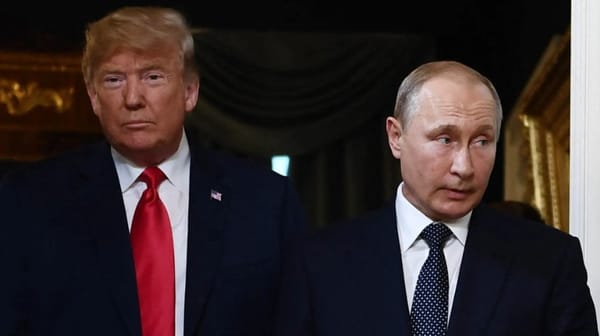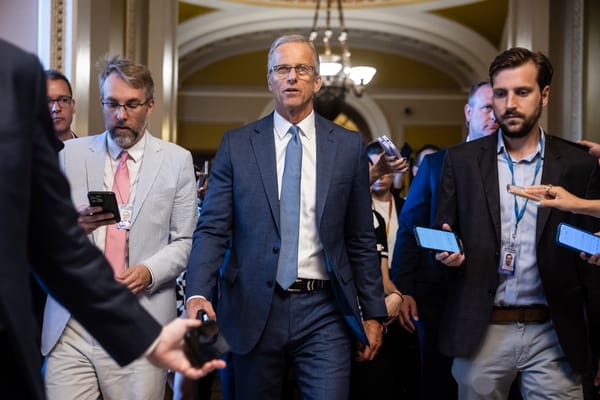U.S. and Italy Hold Bilateral Talks on EU Tariffs and Transatlantic Relations

Introduction
On April 17, 2025, Italian Prime Minister Giorgia Meloni became the first European leader to meet face-to-face with U.S. President Donald Trump since his administration announced—and then partially suspended—a sweeping 20% tariff on European exports. The meeting, held at the White House, comes at a critical moment in transatlantic relations, with the European Union and the United States locked in contentious trade negotiations and broader questions looming over the future of the Western alliance. Meloni, who has positioned herself as a bridge between Brussels and Washington, arrived in Washington with the dual task of defending Italy’s export-driven economy and representing EU interests in hopes of averting a full-blown trade war[1][2][3][4][5][6][7][8].
Background: Trade Tensions and the Stakes
Trump’s Tariff Strategy
Earlier this month, President Trump stunned European capitals by announcing a 20% tariff on nearly all European imports, in addition to existing 25% duties on steel, aluminum, and vehicles[3:1][4:1][6:1][7:1]. The move was justified by the administration as a response to what it claims are unfair trade barriers imposed by the EU on American goods. Trump’s “reciprocal tariffs” are part of a broader strategy to force trading partners to lower their own barriers and open their markets to U.S. products.
Facing immediate backlash, Trump agreed to suspend most of the new tariffs for 90 days, lowering the rate to 10% during a negotiation window[4:2][7:2]. The EU, in turn, paused its planned retaliatory tariffs on $23.8 billion worth of U.S. exports, signaling a willingness to negotiate but warning that countermeasures would return if talks failed[4:3].
Italy’s Economic Vulnerability
Italy, the eurozone’s third-largest economy, is especially exposed to U.S. trade policy. The United States is Italy’s third-largest export market outside the EU, accounting for about 10% of Italian exports—valued at around €67 billion ($76 billion) annually[8:1]. Italy enjoys a €40 billion ($45 billion) trade surplus with the U.S., driven by high-value exports such as luxury fashion, food products, machinery, and vehicles[1:1][2:1][6:2][8:2]. Many of these sectors are dominated by small and medium-sized enterprises, a core Meloni constituency.
The prospect of tariffs has already forced Rome to revise its economic growth projections downward for 2025 and 2026[6:3][8:3]. Meloni faces intense domestic pressure to protect these industries and maintain access to the lucrative U.S. market.
Meloni as EU Bridge
Meloni’s visit is not just about Italy. She has been “knighted” by EU Commission President Ursula von der Leyen to represent the bloc’s interests at a pivotal moment[1:2][2:2][7:3][8:4]. The outreach is closely coordinated, with Meloni in regular contact with Brussels before and during her trip[1:3][7:4][8:5]. The EU is pushing for a “zero-for-zero” tariff agreement—eliminating duties on industrial goods and autos—but the Trump administration has so far rejected this approach, insisting on a baseline 10% tariff for all foreign imports[1:4][7:5].
The White House Meeting: Agendas and Atmosphere
Diplomatic Choreography
Meloni’s meeting with Trump was scheduled for 1:05 p.m. ET, followed by a working lunch. She stayed overnight at Blair House, across from the White House, underscoring the importance of the visit[3:2]. The session was closely watched in European capitals, with Meloni’s ability to “bridge” the Atlantic divide under scrutiny from both supporters and skeptics[2:3][3:3][4:4][5:1][7:6][8:6].
Key Discussion Points
- Tariffs and Trade Policy:
- Meloni pressed for the suspension or elimination of Trump’s tariffs, warning that “dividing the West would be disastrous for everyone”[1:5][5:2][8:7].
- She advocated for the EU’s “zero-for-zero” proposal and stressed the importance of the $1.8 trillion annual transatlantic trading relationship[1:6][7:7].
- Trump, for his part, sought concessions on market access for U.S. goods and reiterated his call for a baseline 10% tariff on all imports[1:7][7:8].
- Defense and Security Cooperation:
- Trump is expected to reiterate demands for increased NATO defense spending, a sensitive issue for Italy given its high public debt[5:3].
- The leaders discussed ongoing cooperation in Ukraine and the Middle East, as well as the exclusion of the EU from recent U.S.-Russia talks on Ukraine[2:4][3:4][5:4].
- Broader Transatlantic Relations:
- Meloni positioned herself as a mediator, balancing her ideological alignment with Trump and her responsibilities as an EU leader[2:5][3:5][4:5][5:5][7:9][8:8].
- Both sides expressed hope for a reset in transatlantic relations, but acknowledged the challenges posed by Trump’s unpredictable approach and the EU’s internal divisions[2:6][3:6][4:6][7:10][8:9].
Domestic and European Reactions
Italian Perspective
Meloni’s government has tried to reassure Italian businesses that she will defend their interests in Washington[6:4][8:10]. She has publicly criticized Trump’s tariffs as “wrong” and “misguided,” warning that protectionism will hurt both sides[6:5][8:11]. At the same time, she is careful to avoid open confrontation with Trump, whose favor she has cultivated since attending his inauguration in January[3:7][4:7][5:6][7:11][8:12].
Italy is exploring ways to cushion the blow of tariffs, including repurposing €14 billion from its post-COVID recovery plan and tapping EU regional development and climate funds[6:6]. However, the government has ruled out additional borrowing and is bracing for slower growth as a result of the trade uncertainty[6:7].
European Commission and EU Member States
The European Commission has backed Meloni’s outreach, seeing her as a credible interlocutor with Trump[1:8][2:7][7:12][8:13]. However, some EU capitals—especially Paris—have warned that her solo approach could undermine EU unity and play into Trump’s divide-and-conquer tactics[2:8][4:8][7:13][8:14]. The Commission insists that trade negotiations remain its exclusive competence and that any deal must benefit all 27 member states[1:9][2:9][7:14].
Analysis: The Stakes for Transatlantic Relations
Trade: A Fragile Truce
The current 90-day suspension of most tariffs is a temporary reprieve, not a resolution[4:9][7:15]. If the U.S. and EU cannot reach an agreement, a new escalation in the trade war is likely, with both sides poised to reimpose punitive duties[4:10][7:16]. The EU’s “zero-for-zero” proposal remains on the table, but Trump’s team has shown little willingness to compromise on the 10% baseline tariff[1:10][7:17].
For Italy and the broader EU, the stakes are enormous. The transatlantic trading relationship supports millions of jobs and underpins the Western alliance. A protracted trade conflict would damage both economies and further strain already fragile political ties[1:11][4:11][7:18][8:15].
Defense and Security: Burden-Sharing and Strategic Uncertainty
Trump’s continued pressure on NATO allies to increase defense spending remains a flashpoint. Italy, with its high debt and sluggish growth, faces tough choices about how to meet U.S. demands without undermining fiscal stability[5:7]. The broader question is whether the U.S. will remain committed to European security or continue to shift the burden onto its allies.
Meloni’s Balancing Act
Meloni’s visit underscores her unique position as both a Trump ally and a European leader. Her ability to navigate the competing demands of Washington and Brussels will shape not only Italy’s economic fortunes but also the trajectory of EU-U.S. relations in the months ahead[2:10][3:8][4:12][5:8][7:19][8:16].
Conclusion
Prime Minister Giorgia Meloni’s high-stakes visit to Washington marks a critical test for transatlantic relations at a time of mounting trade tensions and strategic uncertainty. As the first European leader to meet President Trump since the tariff announcement, Meloni has sought to defend Italian and EU interests, advocate for a negotiated solution, and position herself as a bridge between two increasingly fractious partners. The outcome of her talks with Trump will reverberate far beyond Rome and Washington, shaping the future of the world’s most important economic and security alliance.
Whether Meloni’s diplomatic finesse can avert a trade war and reset the transatlantic partnership remains to be seen. For now, the fragile truce holds—but the next 90 days will be decisive for the future of U.S.-EU relations.
https://www.pbs.org/newshour/politics/watch-live-trump-meets-italys-meloni-in-meeting-at-white-house-as-europe-seeks-bridge-to-u-s ↩︎ ↩︎ ↩︎ ↩︎ ↩︎ ↩︎ ↩︎ ↩︎ ↩︎ ↩︎ ↩︎ ↩︎
https://www.reuters.com/world/italys-meloni-meet-trump-amid-us-europe-trade-tensions-2025-04-15/ ↩︎ ↩︎ ↩︎ ↩︎ ↩︎ ↩︎ ↩︎ ↩︎ ↩︎ ↩︎ ↩︎
https://www.reuters.com/world/trump-italian-prime-minister-meloni-address-us-europe-tariff-tensions-2025-04-17/ ↩︎ ↩︎ ↩︎ ↩︎ ↩︎ ↩︎ ↩︎ ↩︎ ↩︎
https://www.cnbc.com/2025/04/17/italys-giorgia-meloni-to-meet-trump-amid-trade-standoff-with-europe.html ↩︎ ↩︎ ↩︎ ↩︎ ↩︎ ↩︎ ↩︎ ↩︎ ↩︎ ↩︎ ↩︎ ↩︎ ↩︎
https://www.yahoo.com/news/italys-meloni-seeks-eu-tariff-141647608.html ↩︎ ↩︎ ↩︎ ↩︎ ↩︎ ↩︎ ↩︎ ↩︎ ↩︎
https://www.reuters.com/world/italys-meloni-meet-trump-april-17-tariff-talks-2025-04-08/ ↩︎ ↩︎ ↩︎ ↩︎ ↩︎ ↩︎ ↩︎ ↩︎
https://menafn.com/1109441915/Italian-Premier-Aims-to-Solve-EU-US-Trade-Conflict ↩︎ ↩︎ ↩︎ ↩︎ ↩︎ ↩︎ ↩︎ ↩︎ ↩︎ ↩︎ ↩︎ ↩︎ ↩︎ ↩︎ ↩︎ ↩︎ ↩︎ ↩︎ ↩︎ ↩︎
https://www.bbc.com/news/articles/crkxxnez21yo ↩︎ ↩︎ ↩︎ ↩︎ ↩︎ ↩︎ ↩︎ ↩︎ ↩︎ ↩︎ ↩︎ ↩︎ ↩︎ ↩︎ ↩︎ ↩︎ ↩︎




